European Walking Big Day record: 176 bird species in one day by just walking
24 December 2017 · Aleix Comas, Jordi Sargatal, Deli Saavedra, Oriol Clarabuch, Gerard Carbonell, Joan Carles Gimisó & Ponç Feliu - Tramuntana Birding Team · 9930 × bekeken
It all started on a casual spring day, when some members of our team recorded 100 species in Aiguamolls Natural Park without really aiming for it, and at the end of the day they thought about actually trying to record as many species as possible. To do that, two teams were formed and from that year on they began a friendly competition and to gathering knowledge on the best dates and the best places. Since mid 80’s, we have been actively birding in what we call “Bird Marathons”, currently betterknown as “Big Days”.
However, it was not until 2004 when we chose Tramuntana Birding Team as our name, named after the hard-blowing northern wind “Tramuntana”, typical for the region where we mainly bird around, the Empordà, North Eastern Catalonia. Empordà county is an area with mountains that reach 1250m above sea level at less than 20km from the sea in a straight line, with several different habitats in between and hosting three Natural Parks (Aiguamolls de l’Empordà, Cap de Creus and L’Albera).
For more than 30 years, and having experienced no less than 100 Big Days, our performance improved and we reached the magic number of 200 birds in one single day in 2003 and, just a few years later, 217 birds in 24 hours (what has been the European record for 10 years), by travelling around the whole country -Catalonia- by car from the Pyrenees to Empordà, from Lleida Steppes to Ebre’s Delta, by several means (1,000 km by car, 300 by plane and several miles by boat in the Mediterranean).
However, and after a sabbatical year, we realized that the environmental impact we left back our steps was huge and that it was not ethic or coherent to keep birding that way. As competition grew, so did our mileages and our CO2 emissions. This, added to the fact that some of us began having children, thus limiting our possibilities for scouting, led us to the decision of turning into Green Birding Big Days in 2014. Birders are, generally, people who care about the environment. As climate change is advancing at an alarming rate, birders are getting more conscious of the need to green their birding. On the other hand, green birding is also a efficient way of birding: birding by bike or on foot allows you to keep a continuous track of bird songs along your route, therefore increasing chances of recording new species on unexpected places where you wouldn’t have stopped if going by car. And as a bonus, you do some exercise, which is good for your health.
And, what is easier, faster, cheaper and greener than doing it by bike in one of the most world famous cyclist Mecca, the Girona area?
Therefore we came back to Empordà county and we recovered the same itinerary followed some 20 years ago, but this time by bike. However, after several attempts of a hard 170 kilometres route from the high Pyrennees at 2,000 meter a.s.l. to Empordà coastal area, never reaching 170 species, we decided to just focus on the Empordà area, where we have a good representation of habitats; deciduous mountain forests, inner freshwater lagoons, agricultural fields and farmland, dry semi-arid areas, rocky coastal cliffs, Mediterranean bush land, sandy bays, several marshes and wetlands and open sea. It turned out to be the good choice, as we reached 182 species biking less than 70 kilometres with mountain bikes in 2014 and 2015.
Apart from that, one of the members of the team, Ponç Feliu, did a Green Big Year during 2013, when he reached up to 304 by cycling more than 10.000 kms around Catalonia from January to December, what is currently the European record of pure green birding (not even using public transport).
In spite of those good numbers by cycling, and as we have always loved to improve our challenges, we decided to make one more step. Actually, we chose to take thousands of steps: We would do almost the same route that provided 182 species by bike, but this time on foot. And that was what we did the 30th of April of 2017. We walked from the top of Albera mountains (1,200 meters a.s.l.) to Aiguamolls Natural Park, totalling 57 kilometers and a number of birds that almost reached the European record by bike, 176 species.
The Walking Big Day
The day started at the very top of Albera Mountains, where the deciduous forests provide difficult species of Mediterranean forests, like Tawny Owl, Marsh Tit, Black Woodpecker, Nuthatch, Bullfinch, Mistle Thrush, Hawfinch, Dipper and even a surprise showed off, a Siskin, a very rare breeder in Catalonia. As we were descending, the vegetation was changing and so did the birds, with the first Sylvia warblers (we manage to see up to 8 species), Bonelli’s Warbler, Golden Oriole, Wood Larks, Song Thrush, Melodious Warblers and, above in the sky, the first raptors were crossing the mountain passes on migration to the north (Marsh Harriers, Griffon Vultures, Red Kites, Honey Buzzards, Goshawks, etc.). During a few days coinciding with our Big Day, hundreds of small migrant passerines were seen in this area: Winchats, Wheatears, Wood and Willows Warblers, Redstarts, Pied and Spotted Flycatchers, and even two very scarce birds in our regions, Richard’s Pipit and Sedge Warbler.
We arrived to the more arid lowlands of farmed hills and other open-habitats with 85 species on our list and 26 kilometres on our feet. We were increasing our list with birds such as Iberian Grey Shrike, Thekla’s and Crested Lark, Tawny Pipits, Roller, Lesser Kestrel, Montagu’s Harrier, Rock Sparrow, Greater Short-toed Lark, Turtle Dove, Red-rumped Swallow, Alpine Swift, Red-legged Partridge and even a solitary Collared Pratincole on a sandy field. We also got both Little Owl and Barn Owl in a couple of territories worked out during the scouting of the previous days.
Next step, after taking off our shoes to cross Orlina River, was the marsh area of Aiguamolls de l’Empordà Natural Park, those interesting wetlands that our team captain, Jordi Sargatal, managed for years after having preserved it from its urbanization in the 70’s. Its freshwater lagoons, its coastal saltpans, its temporary marshes and its reed beds provided more than half of the birds seen during the day. From big birds like Glossy Ibis, White Stork, Squacco, Great White and Purple Heron and Flamingos, to small waders (more than 20 different species seen on that day). We managed to get tricky birds like Penduline Tit, Moustached Warbler, Red Knot, Greylag Goose, Lesser Black-backed Gull, Ruff, Curlew Sandpiper, etc.
By then, after 144 species seen and 42 kilometres walked, our feet were burning and most of us had blisters around the toes. We were tired, too. However, we knew we were doing an excellent job, and the numbers were surprisingly high. We could not give up. And we didn’t. We reached the sea, after a long walk crossing Empuriabrava tourist resort, where we just watched a couple of exotic (but adding to our list anyway) birds: Monk and Rose-ringed Parakeets. The Mediterranean Sea was unusually productive; hundreds of Little Gulls flew everywhere, plus some skuas, both Mediterranean and Balearic Shearwaters, and even Avocets on active migration. We had to take off our shoes again for a while to cross several flooded marshes and sandy shallow lagoons. The last two big surprises were highly sought after: Red-throated Pipit, a regular but scarce migrant in Eastern Catalonia, and a hidden Little Crake, both in Matà marshes while searching for our last waders of the day.
As the sun was hiding behind the Pyrenees, far away from where we started our day and reaching our final destination, several nocturnal birds came to close our amazing list: Black-crowned Night-Heron, European Nightjar, Stone Curlew and Scops Owl, our last bird of the day. We did it. We managed to watch many more birds than we expected: 176 species during our 57 kms walking day, thanks to our feet, our scouting and, most of it, our amazing Empordà region (For a photograpic impression of the walk, please scroll down).
Tramuntana Birding Team
Aleix Comas, Jordi Sargatal, Deli Saavedra, Oriol Clarabuch, Gerard Carbonell, Joan Carles Gimisó and Ponç Feliu
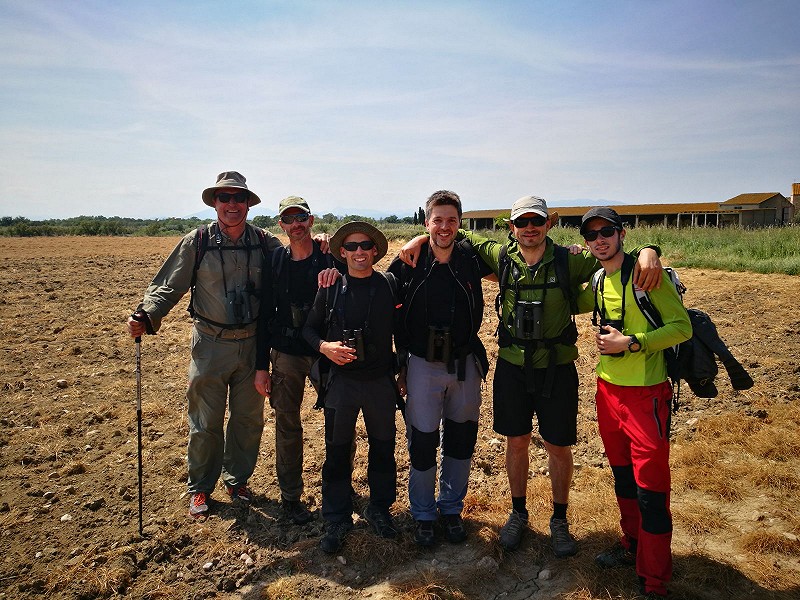
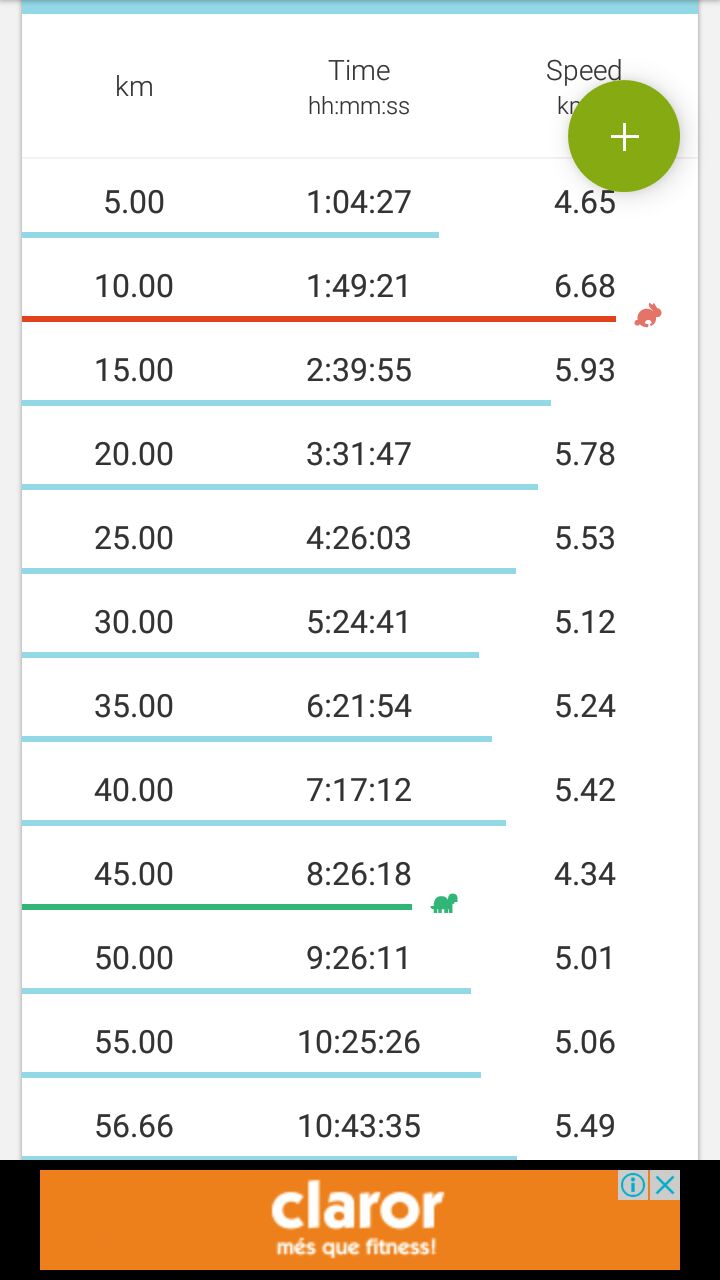
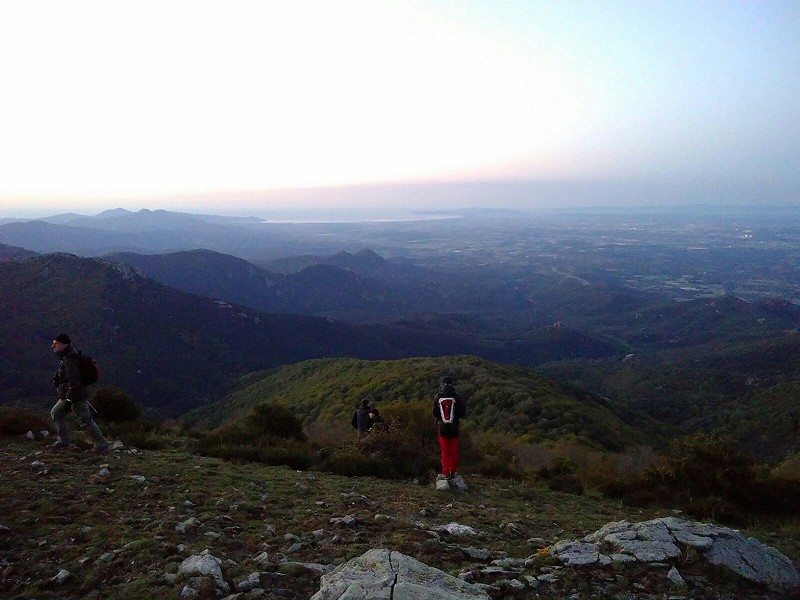
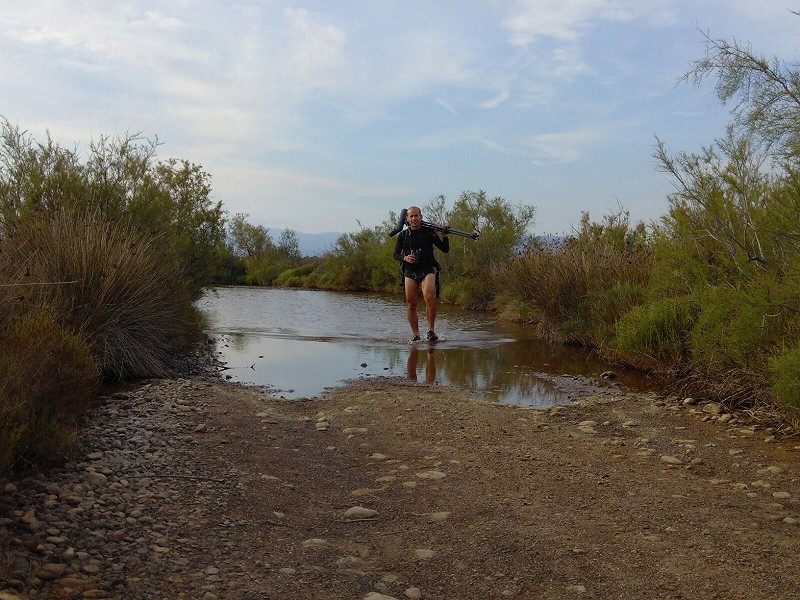
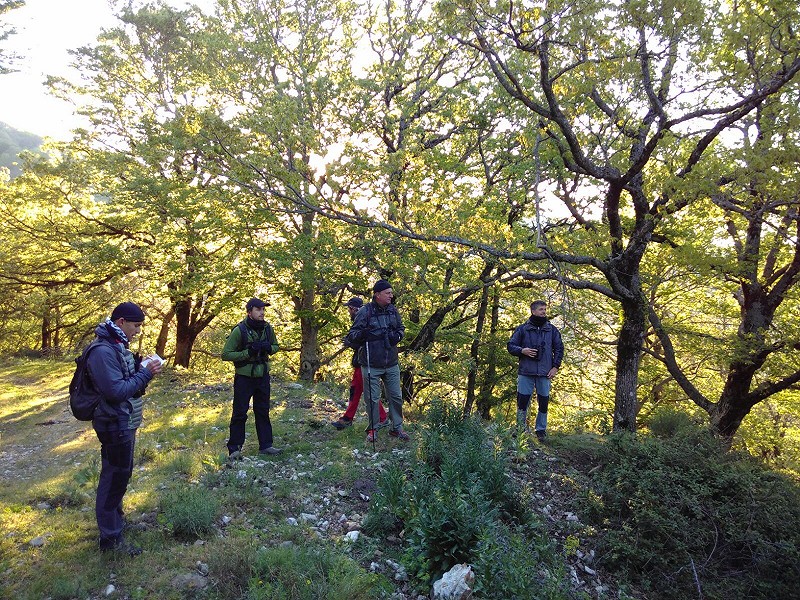
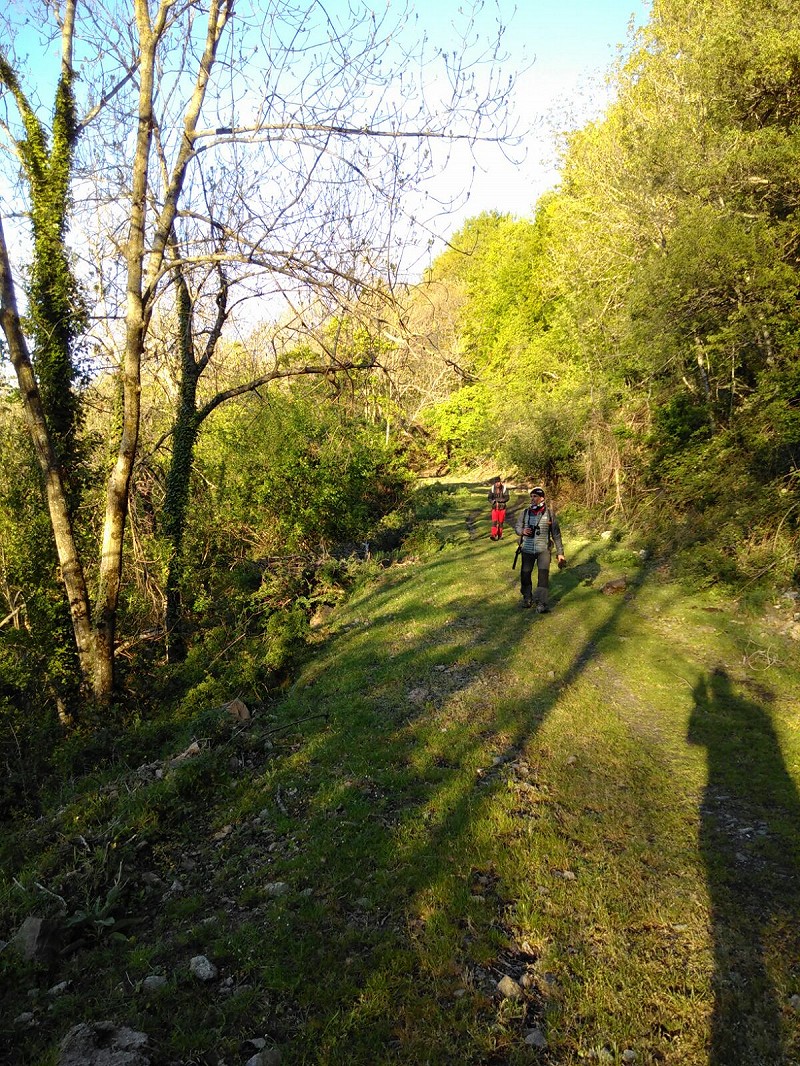
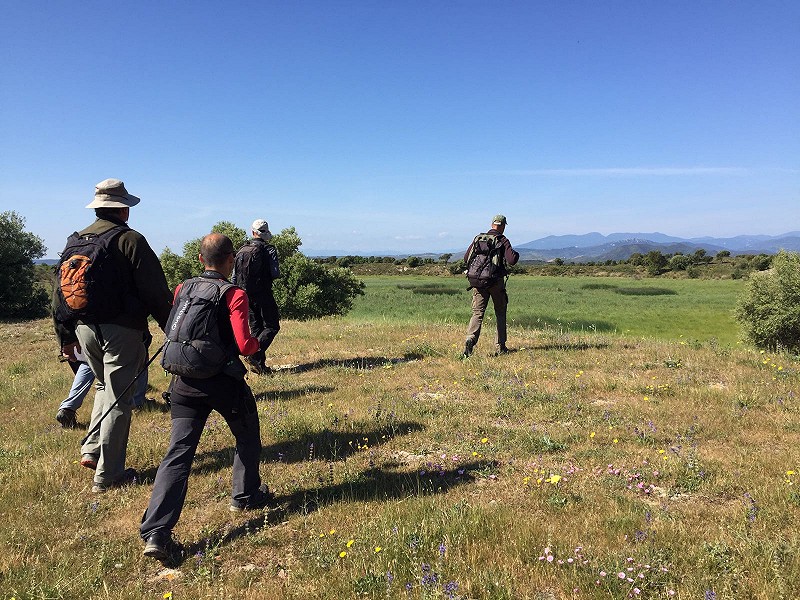
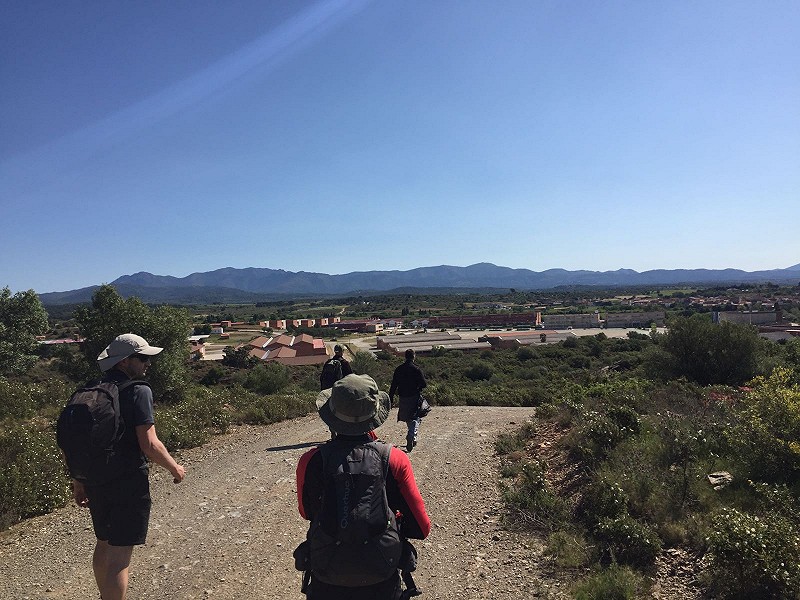
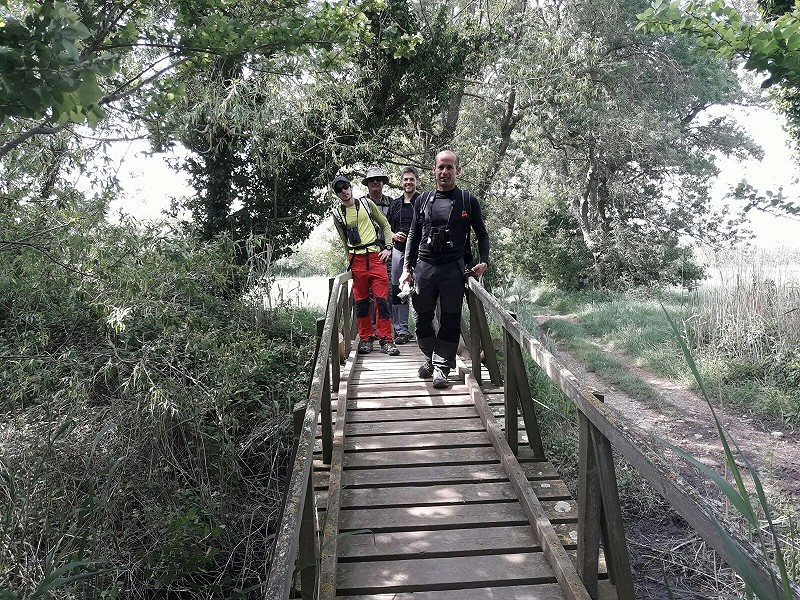
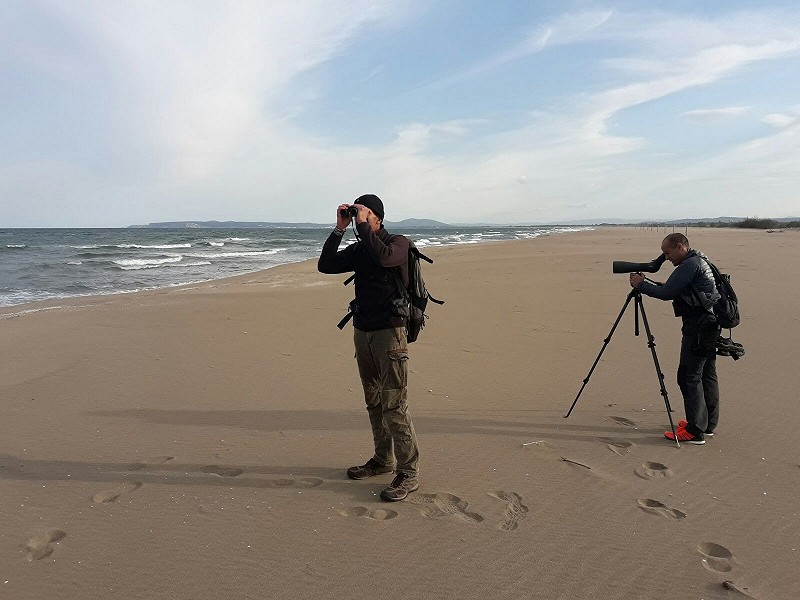
Discussie
Arjan Dwarshuis
·
25 December 2017 12:17
very cool! impressive effort!
Gijsbert van der Bent
·
25 December 2017 21:55
Keep on walking!
Julian Bosch
·
26 December 2017 10:31, gewijzigd 26 December 2017 10:33
Impressive performance! Although I visit the Empordà region annually in July/August, I still have not seen a few of the species you mention in your report (vagrants excluded). Is the complete list online somewhere?
Redmar Woudstra
·
28 December 2017 18:40
Well done! Could there be another location or country where this total could be even higher? In the WP I am thinking of Israël, Morocco or Turkey, but in Europe I think it should be Spain. Might there be some spot in the south of the country that could give even more?
Deli Saavedra
·
29 December 2017 09:49
Hi Redmar, thanks for your comment and yes, we have been thinking a lot where in Europe to score higher ... but I think it can difficult, especially because you cannot cover more than let's say 60 kms in one day, therefore you need areas where the high mountains and the lowlands (wetlands, sea) are close by. Maybe Southern Spain, Andalucia for example, could be a candidate. The only way is by testing it! ;) Best!
Dušan Brinkhuizen
·
29 December 2017 15:18
Excellent record! And the best part: no motorised transport... need to do this myself one day. Can the legendary record of Ted Parker & Scott Robinson be broken?
Redmar Woudstra
·
29 December 2017 15:30, gewijzigd 29 December 2017 15:30
@Dusan:
I guess that in the Neotropics you can get a lot more by walking down the Andes! Eastern Ecuador is the place to be I guess, or Manu road?
What's the Ted Parker record?
@Deli:
Good luck, I might not be the one to test that, as I never walked more than 30k a day ;)
Dušan Brinkhuizen
·
29 December 2017 16:02
Ted Parker's total was 331 species: all by foot and paddled canoe at Cocha Cashu Station, Manu lowlands, Peru in Sept 1982.
Manu road would be great for a bicycle big day... very long walk otherwise.
Wouter de Quant
·
8 January 2018 19:10
Great story. I love the green angle.
If you go to an exotic location to beat this record you have to travell and pollute. That nullifies the idea of doing a green birding day. You can't beat a green record if you pollute to get there in the first place.
Gary Brian Prescott
·
13 January 2018 20:48
What a fantastic achievement and brilliant to see Ponc in the team. Massive congratulations to the whole team. Spread the news that Green Birding is the best way to see birds!
Gary Brian Prescott
·
13 January 2018 20:52
By the way Dusan, this year I will be cycling down the Manu Road. There is no way I could ever conceive of beating, or even approaching Ted Parker and Scott's immense record but knowing how fabulous the Manu Road is from top to bottom from previous birding time there, I know the adventure is going to be amazing.
Meanwhile Ponc . . . where can we meet up for a day's birding? It would be so wonderful to meet you in person.
Happy New Year everyone.
Gebruikers van het forum gaan akkoord met de forumregels.

